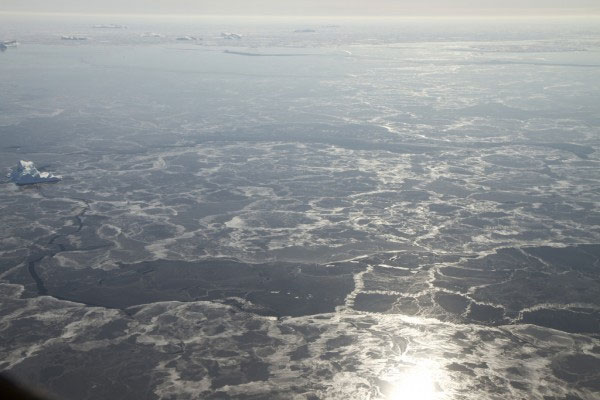Arctic sea ice area is at a record low
Antara cited sources from the Japan Aerospace Exploration Agency (JAXA), saying the Arctic sea ice area has fallen to 4.21 million km 2 , the lowest level since the satellite was first observed. 1979.
>>>The Arctic ice will disappear in the next 10 years?
According to JAXA, the previous record low of 4.245 million square kilometers recorded on July 24, 2007 and the Arctic sea ice will continue to narrow until mid-September.

Deputy Director of the Arctic and Antarctic Research Institute, based in St. Petersburg Petersburg (Russia), Alexander Danilov explained that the Arctic sea ice area was reduced to a record low mainly due to the unusually warm temperature, also at a record high, in 2011.
The report released in March by the World Meteorological Organization said the Arctic ice thickness has decreased by an average of 10-15cm.
Meanwhile, the US National Snow and Ice Data Center (NSIDC) also announced the narrowing of the Arctic sea ice area to a record low of 4.17 million km 2 on September 16, 2007, and warning this narrowing trend is still ongoing.
NSIDC notes that the degree of shrinkage of sea ice in the Arctic in the early days of August has increased from 100,000 km 2 / day in recent months to 200,000 km 2 / day, when a major storm occurs.
Danilov said that the speed of ice was broken up because of strong winds that increased the speed of melting ice and increased the impact of ocean waves on ice mountains. The change in the circulation pattern of the Earth-warmed atmosphere because of the greenhouse effect has made the warmer and stormy atmosphere visit the Arctic more often, leading to faster movement of ice from the Arctic. Ocean to the Atlantic Ocean.
- Arctic ice is melting record fast
- The volume of ice in the Arctic drops to a record low
- The area of ice in the Arctic dropped a record in the summer
- The Arctic ice sheet dropped a record
- Ice in the Arctic down to a record low
- The ozone layer in the Arctic declined to record
- Seabirds are polluting the Arctic
- The area of the Arctic ice falls to the lowest level
- 2040 will no longer have ice in the Arctic?
- Ice area increased record in Antarctica
- Interesting facts about animals living in the Arctic
- Discover the ancient village of Eskimo under the ice melting in the Arctic
 Is the magnetic North Pole shift dangerous to humanity?
Is the magnetic North Pole shift dangerous to humanity? Washington legalizes the recycling of human bodies into fertilizer
Washington legalizes the recycling of human bodies into fertilizer Lightning stone - the mysterious guest
Lightning stone - the mysterious guest Stunned by the mysterious sunset, strange appearance
Stunned by the mysterious sunset, strange appearance